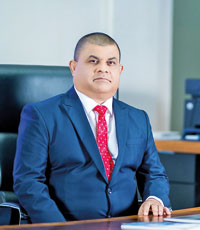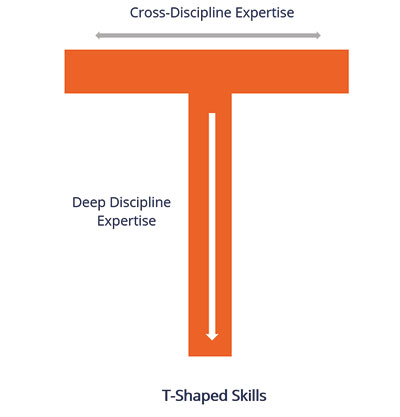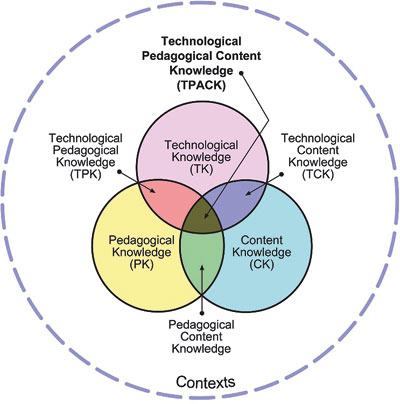Integration of Technology in Higher Education to Facilitate Outcome-Based Learning (OBL)
View(s):It is a fact that the COVID -19 pandemic has caused a significant disturbance in all the domains of human lives. The education sector has been affected to a great extent due to the closure of higher educational institutes, universities, and schools. This has resulted in shifting traditional education to online platforms. The scenario of this technological transition has affected the education of about half of the student population globally (UNESCO, 2020). Thereby, the situation raises the importance of technology integration into education, and teachers are required to update their competencies to endow quality education and make changes to their curriculum and teaching accordingly.

Dr. D.M.A Kulasooriya, Director General National Institute of Business Management
Moreover, the effective integration of Information Communication and Technology (ICT) is essential in systematising an efficient online educational programme. The successful application of ICT not only contributes to learners’ satisfaction but also helps individuals acquire their desired outcomes (Cervero, 2020). It is, therefore, essential to develop competencies in teachers to use ICT effectively in their pedagogical practices by organising professional development programmes (Guillén-Gámez, 2020).
Outcome-Based Learning (OBL)
Outcome-Based Learning (OBL) describes an educational model which assumes that a predetermined outcome should guide the entire learning process. OBL is focused on developing Technical Competencies (TC) as well as Career Readiness Competencies (CRC.) Further, it assesses the real learning experience that a learner goes through in each domain. The basic premise of OBL is that its teaching and learning activities (TLAs) and assessment methods (AMs) are constructively aligned with the intended learning outcomes (ILOs) of the course. In other words, the outcomes determine the curriculum content, the teaching methods and strategies, and the assessment process. The outcomes also provide a framework for curriculum evaluation. Hence, assessment is an integral part of learning and teaching in the OBL process. At the end of the teaching, learners are given opportunities to assess what they have learnt and to discuss with teachers on the real learning experience. Memory testing and examinations with a limited number of hours are omitted and continual experiential learning is encouraged throughout the teaching and learning process in the OBL system. NIBM, with its vast teaching and learning experience in the last 53 years, opted to change from the traditional model of teaching and learning to Outcome -Based Learning (OBL) from 2022.
T-Shaped Skills
The world is experiencing multiple transitions at a rapid pace, be it in education or corporate spaces. During the pandemic and its aftermath, the demand for T-shaped skills or T-shaped persons has been extremely high. The T-shape model is essentially a metaphor used in job recruitment to describe the abilities of those in the workforce. The first official reference to T-shaped skills or a T-shaped person, was made by David Guest back in 1991. The concept gained real popularity after the CEO of IDEO, Tim Brown, Co-founder of a renowned design thinking consultancy firm -, endorsed the idea of T-Shaped People. Brown’s thinking is that using the search for T-shaped skills or a T-shaped person helps in building the very best interdisciplinary teams within a company. It, in turn, leads to a stronger, more efficient, and potentially groundbreaking company.
A T-shaped worker is someone who combines two aspects: wide range of skills and knowledge (the horizontal part of the T) with specialised expertise in a more focused area (the vertical part of the T). Workers who embody the T-shape possess skills that are applicable in several areas that make them a valued member of the workforce with emotional intelligence, creativity, and the ability to work in a cross-functional team.
They can work inside and outside the boundaries of their specialty. To become a T-shaped worker means to have a wide variety of skills while being specialised in one area which allows an employee to be adaptable to change.
TPACK Model – The Ideal Modern Classroom for Outcome-based Teaching
Technological literacy has become an important factor in the modern classroom and outcome-based learning. The integration of technology into a traditional learning environment helps develop meaningful learning experiences and cultivates positive perspectives and relationships with technology (Constance Adams, 2019). Technology Pedagogical Content Knowledge(TPACK) proposed by Mishra and Koehler in 2009 is a technology integration framework that identifies three types of knowledge instructors need to combine for successful education technology integration(EdTech)—technological, pedagogical, and content knowledge. At the heart of the TPACK framework, is the complex interplay of three primary forms of knowledge: Content (CK), Pedagogy (PK), and Technology (TK).
- Content Knowledge (CK) – “Teachers’ knowledge about the subject matter to be learned or taught.
- Pedagogical Knowledge (PK) – “Teachers’ deep knowledge about the processes and practices or methods of teaching and learning. They encompass, among other things, overall educational purposes, values, and aims. This generic form of knowledge applies to understanding how students learn, general classroom management skills, lesson planning, and student assessment.
- Technology Knowledge (TK) – Knowledge about certain ways of thinking about, and working with technology, tools, and resources. and working with technology can apply to all technological tools and resources.
Application of TPACK in the Classroom in Outcome-Based Teaching
Implementing meaningful technology within any classroom and teaching is vital in the modern teaching and learning process. Thorough evaluation of a tech-based tool that is seamlessly integrated into a predetermined curriculum must be justifiable and it provides an elevated learning experience without feeling cumbersome or irrelevant (Earle, 2002).
John Dewey once said, “If we teach today’s students as we taught yesterday’s, we rob them of tomorrow.” This is true deeply within today’s educational climate. Educators and Teachers must teach in a forward-thinking way. Implementing 21st Century Skills into the classroom has become an increasingly important aspect of curriculum planning and implementation. Integrating technology and technological literacy has become an ever-evolving scope within the modern curriculum and learning environment.
NIBM is in the process of implementing OBL using appropriate technology with digital content and modern pedagogical practices. Digitalisation of content is an arduous task as it consumes lots of time of teachers as well as facilitators. NIBM commenced OBL in 2022 and is in the process of applying it across all the courses being conducted at the Institute.

HitAd.lk is the best and biggest mobile phone market in Sri Lanka, and we guarantee you will find what you need here from our extensive listing of mobile phones for sale in Sri Lanka. Whether it’s a budget-priced smartphone for communication, or higher end features with advanced connectivity, there are many different options from which to choose from on our site!


